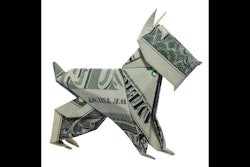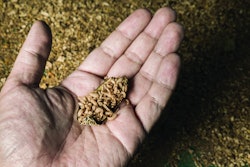
The past year proved to be rough for the pet food business in Eastern Europe – the region with the strongest reliance on Russian fossil fuel, where the breakup of long-standing trade ties was the most painful. The crisis has not only impacted the production plans of pet food manufacturers but also altered consumer behavior in the region’s key markets. In some countries, the picture looks better than in others.
Belarus focuses on replacing pet food imports
Western sanctions have wiped out a large share of imported pet food from the Belarussian market, paving the way for Belkorm, a pet food division of the Zhabinsky feed mill, to boost output.
In 2022, Belkorm reached its highest-ever capacity utilization ratio of around 95%. Since 2019, the company has doubled production and last year launched a new line of dry pet food for cats and dogs, designed to expand the operation by a further 50% to 70%, said Igor Loboda, director of the Zhabinsky feed mill.
Belkorm experienced a five to sevenfold rise in the popularity of its products on the domestic market after the departure of Western brands, Loboda said, adding that the sanctions brought some challenges, too. The company runs on Danish equipment, and supplies of that to Belarus were prohibited in 2022. The company managed to solve this problem by sourcing alternative technologies in Belarus and China, Loboda added.
Some Western brands are still available on the Belarussian market, but the price has nearly doubled compared with 2021, according to research conducted by the Belarussian independent news outlet Myfin. Some customers had to switch their pets to human food, citing a lack of holistic, therapeutic or specialized pet food, which very few local brands are manufacturing.
Belarussian distributors explained that the price of imported pet food has jumped due to skyrocketing logistics costs. In such circumstances, importers abandon some niche brands, warning that these products will be in low demand in the market at such high prices.
Inflation takes toll on Hungarian pet food market
Last year was quite challenging for Hungary, as the country experienced 14.5% inflation and a 50% spike in the average price of pet food on the domestic market, said Tamás Racskó, secretary of the Federation of Hungarian Food Industries.
“The unprecedented increase in prices – which is due to inter alia the significant increase in the costs and availability of raw materials, packaging materials, employee wages, transportation and energy (fuel, gas and electricity included), as well as the 20% negative change in the HUF-EUR (Hungarian Forint-Euro) exchange rate – also affected customer habits,” Racskó said.
As a result, customers started searching for more affordable pet food. “In 2022, compared with the previous year, customers bought roughly the same volume of pet food, but at the same time, due to high inflation, their disposable income was only sufficient to buy products of the lower price category. In other words, those who previously purchased upper premium category products switched to premium category products, and so on,” he added.
In addition, there was a clear shift from wet pet food to dry pet food, as well as from single-dose pet food to multi-dose pet food. There was a slight increase in treats and snacks, especially those for cats. This is in line with the European trend that pets are increasingly treated as family members and rewarded accordingly, according to Racskó.
The present market dynamics are spurring the popularity of private-label brands and also driving customers to opt for smaller dogs due to lower maintenance costs.
“The pressure on the input cost side of the manufacturers is not decreasing; as a result, no significant reduction in prices is expected,” Racskó said. “Furthermore, Hungarian economic prospects have worsened compared to recent years, which is also reflected in the expected decrease in real disposable income. Narrower economic opportunities may further strengthen the trend of so-called ‘downward purchases,’ and it is also expected that the keeping of smaller animals will continue to grow in popularity.”
Poland remains regional pet food leader
Inflation is on the rise across all of Eastern Europe but is not expected to hamper pet food sales in all countries. According to a recent marketing study by Polish think tanks UCE Research and WSB Universities, during the first half of 2022, the average price of dog food in Poland jumped by 26.6% and cat food by 11.7%. Despite that, Poland’s pet food sales are expected to witness steady growth. In 2022, the market size was estimated at PLN 4 billion (US$924 million). In the next four years, the growth is expected to range between 5% and 7% per year.
To a degree, further growth in sales is expected thanks to the humanization trend, which prompts Poles to better care for their pets and drives up sales in the premium segment.
“The next stage the industry must be braced for is the growing interest among keepers and breeders in personalized feeding systems,” said Marcin Maciąg, CEO of a company specializing in this field, Pets Diag. “The starting point for individual animal nutrition will be a thorough diagnosis of the dog or cat’s health, which will be used to create an appropriate diet. This is already slowly happening.”
In addition, researchers point out that the Polish pet food market is still really young, especially compared to other markets. It is calculated that only 30% of Poles feed their pets with ready-made pet food, while the rest still rely on homemade food.
For comparison, in Belgium or Germany, this figure is close to 90%, while in Central Europe, it is close to 50%. This means that despite all challenges, the Polish pet food market still has a strong growth prospect, as millions of customers are expected to gradually switch to ready-made pet food in the next several years.
















